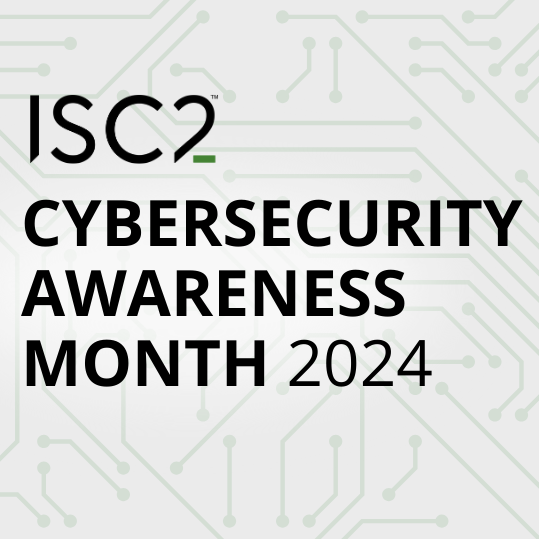Technology is only one part of the cybersecurity mix. People are a critical component, with effective and knowledgeable leaders key to ensuring organizations are successful when executing their cybersecurity strategies and initiatives.
Strong leadership is essential for building robust cybersecurity frameworks, teams and other elements that can adapt to changing threats and foster a proactive security culture within an organization. Leaders set the tone and direction for cybersecurity initiatives. They need to understand the evolving threat landscape and articulate a clear vision and strategy to protect the organization's assets. Effective leadership also ensures that adequate resources are allocated to cybersecurity efforts. This includes investing in technologies, hiring skilled personnel, and providing ongoing training. As Cybersecurity Awareness Month draws to a close, we look at the issue of leadership in ensuring better awareness through the organization.
Leading the Culture
Leaders help cultivate a culture of security within the organization. By promoting awareness and best practices, they encourage all employees to take responsibility for cybersecurity, reducing the risk of human error.
“Leaders must grasp the importance of their role in shaping organizational culture, set the tone, and make pivotal decisions that establish a strong foundation in information security and continually reinforce it,” said Kaushal Perera, CISSP, when discussing the role of leadership in information security. “Leadership of an organization should set the tone when it comes to valuing and prioritizing information security for that organization. When leaders emphasize the need and follow it, employees will – usually – fall into line. In my experience, the bottom-up approach never works for information security,” he added.
It is a point echoed by Amey Thatte, CISSP, who argued for the importance of fostering the inclusion and participation of leaders to help better shape and improve the understanding of cybersecurity in an organization. “While technology offers enhanced capabilities and opportunities for innovation, it also introduces significant risks that must be strategically managed by organization leaders, not just IT departments. Based on my experience, there is a need to build a case for why organizations must elevate their approach to cybersecurity, treating it as a strategic concern at the board and C-suite levels,” he said.
Understanding Expectations
Ensuring that the organization adheres to relevant regulations, best practices and standards are key leadership functions. This governance is critical in managing risk and maintaining trust with clients and partners, and it is essential that the organization is fully aware of its purpose and the need to adhere.
“To ensure success, leadership should understand the risks to their company, the importance of best practices and the consequences of not prioritizing information security. Ask yourself this: when assessing the risk for a new initiative, if the cost-benefit analysis gives the green light to proceed but the risk-benefit analysis gives you the red light, what do you consider?” said Perera. It is why most companies and regulators emphasize the need for having information security representation at board meetings.
“Yes, some regulators mandate the role of Chief Information Security Officer (CISO), with the right qualifications and expertise. This facilitates a smooth bottom-up information flow, enabling a better understanding of risks, informed decision-making, and effective communication of decisions through a top-down approach to tactical and operational levels,” Perera added. It’s one of the reasons why being able to monitor and measure is an important leadership tool.
“One of the key components of a comprehensive cybersecurity strategy is the implementation of effective metrics to track, analyze and improve security posture and identify potential vulnerabilities,” said Nitin Uttreja, CISSP. “By measuring key aspects of security posture, organizations can effectively identify vulnerabilities, track progress and make informed decisions to mitigate risks. However, the true value of cybersecurity metrics lies not only in the numbers themselves but in how they are communicated to senior management,” he added.
Communications Bridge
Leaders play a valuable role in engaging with stakeholders and being a bridge between different groups, including board members, employees, and customers.
According to Anindya Chatterjee, CISSP, CCSP, the responsibility of a security leader has expanded beyond the boundaries of the tea, to impact individuals elsewhere in the organization. “Security teams need to forge relationships with people in the organization who can speak the language of business in order to create or improve the perception of value from the security team,” he noted in his article looking at bridging the gaps between security teams and leaders. “If we are able to align the security strategy with the organizations wider strategy then things will accelerate in a good way,” he added.
It's another reason why communication is so important a skill for cybersecurity leaders.
As Dave Cartwright, CISSP, wrote on the subject of communication best practice: “Senior management need to know the facts of the organization’s cybersecurity situation, not what you think about a particular issue that you’re focused on at the time.”
In this complex and constantly cybersecurity landscape, action is not only about prevention but also about communication, preparation and response to ensure that people understand why cybersecurity is critical and to ensure that organizations can quickly adapt and respond.
Strong cybersecurity leadership is not just an operational necessity, but a crucial strategic element that can determine the long-term success and sustainability of an organization.
- The CISSP certification proves you have what it takes to effectively design, implement and manage best-in-class cybersecurity programs and teams
- ISC2 Cybersecurity Leadership Express Courses explore the fundamental concepts of cybersecurity and their real-world applications for executive- and board-level planning and decision-making
- ISC2 Executive Leadership Courses broaden your skill set and break through barriers with actionable strategies that deliver measurable results



